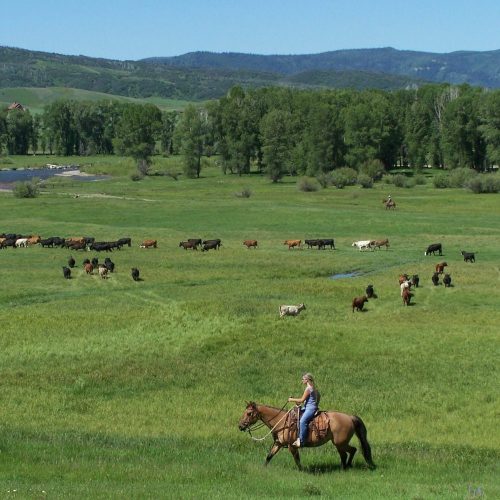Buyers often ask about carrying capacity on various ranches. The answer is almost always the same…it depends. Although a ballpark number is easy to determine, the location of the ranch and even the micro-climates on the ranch itself can tip the scales. There are a few major considerations that sort to the top of the list when estimating the carrying capacity of a ranch: rainfall, slope, irrigation and type of livestock. A good rain year will (and on the flip side, a particularly dry year) will affect the average. A multi-year drought can severely hinder a ranch’s ability to support a reasonable number of animals. The topography and slope can affect how early livestock can be turned out to graze. A southwest facing slope will melt earlier and will also dry out earlier in the summer. North and east facing slope can provide later season grazing opportunities. Perhaps the biggest differential is whether the land is irrigated. The ability of a ranch to support more intense grazing is markedly increased when land is irrigated or sub-irrigated. The type of livestock a landowner runs is important: sheep eat different plants than cattle and horses. Smaller framed breeds mean fewer acres per head, although breed-specific productivity may offset the additional acres required for larger framed animals. Combining these factors to estimate a ranch’s ability to carry a herd from spring through fall provide just that—an estimate. Light stocking rates and trial-and-error on a particular property will help move that number over time, from an estimate to a appropriate number range.
19
Aug
Aug
Stocking Rate?….A Loaded Question




